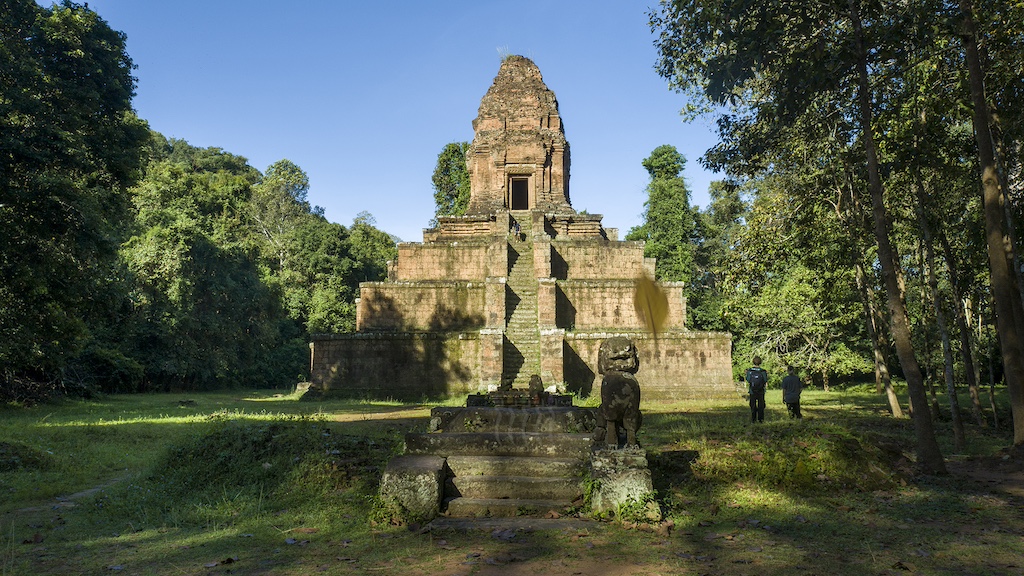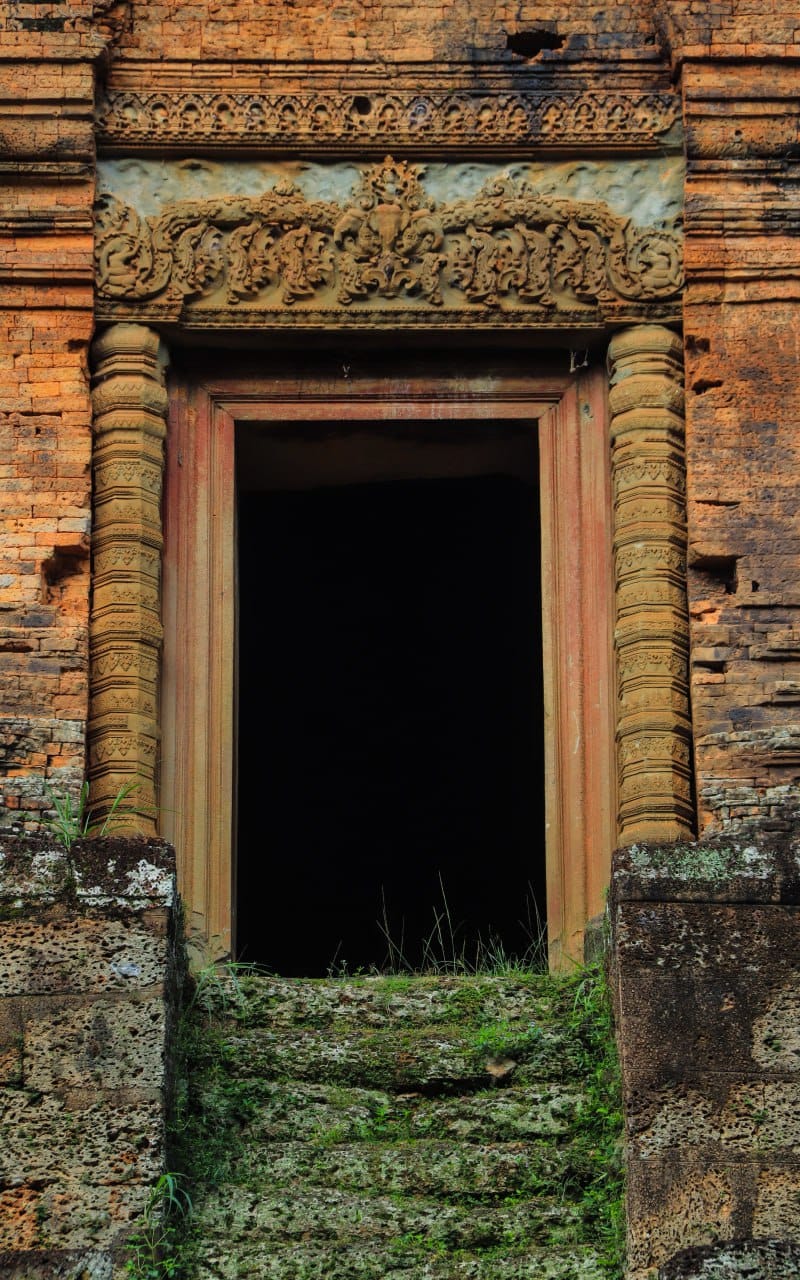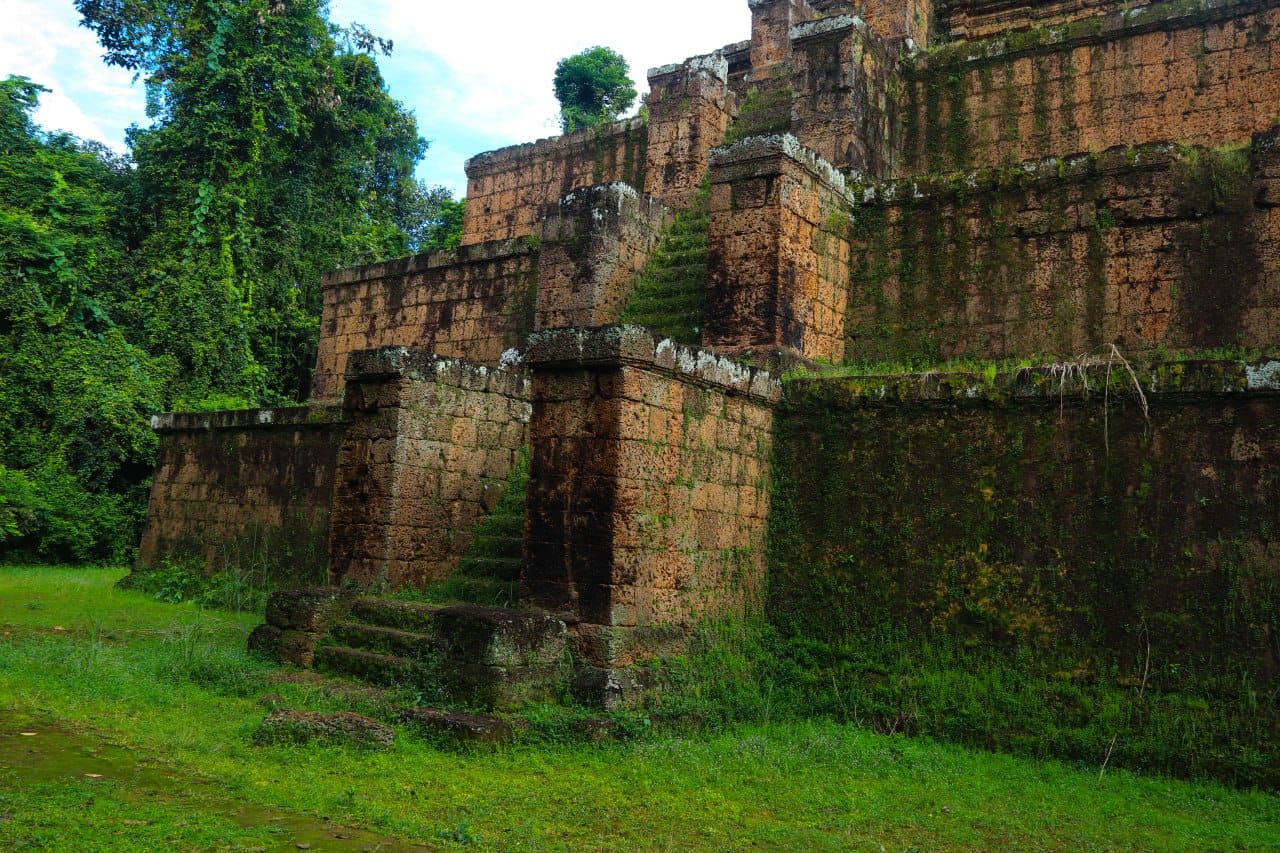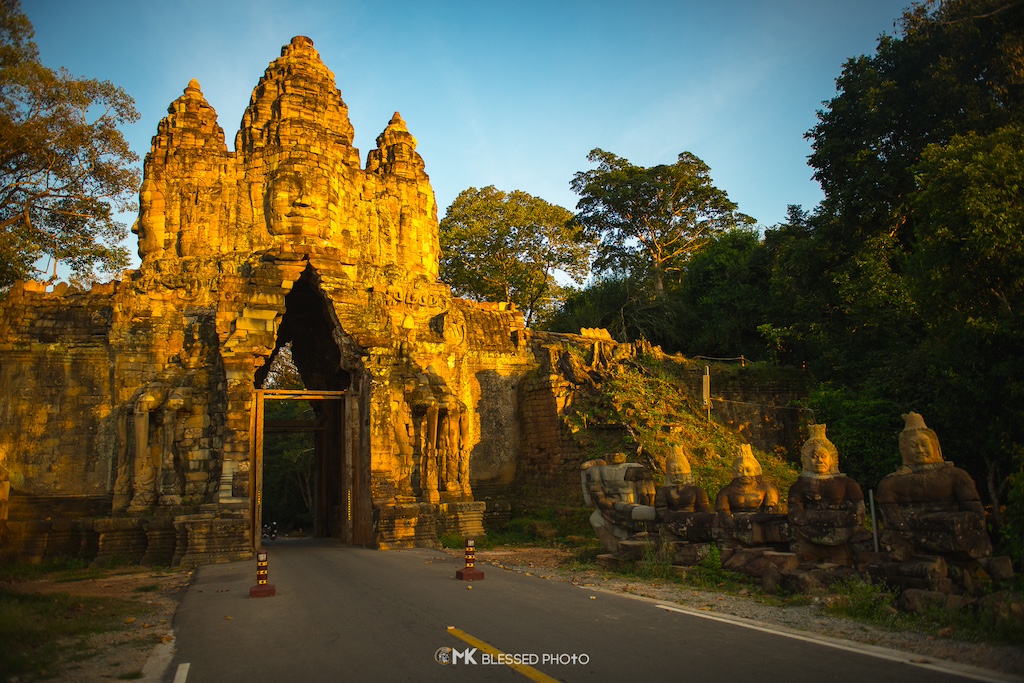(Photos by: Apsara National Authority)
Baksei Chamkrong: The Ancient Pyramid Temple of Siem Reap
Baksei Chamkrong, a small yet historically significant temple, stands as a remarkable example of early Khmer architecture. Located near the South Gate of Angkor Thom, this temple is often overlooked by tourists but is a hidden gem worth exploring. It was built in the early 10th century by King Harshavarman I and later completed by Rajendravarman in the mid-10th century.
The name 'Baksei Chamkrong' means 'The Bird Who Shelters Under Its Wings' and comes from a legend involving the king and a divine bird. The temple was originally dedicated to Shiva and was constructed using bricks and laterite, with sandstone used in key decorative areas.
Baksei Chamkrong is notable for its pyramidal shape, representing the mythical Mount Meru. It consists of four tiers leading up to a central sanctuary, which once housed a significant lingam. The steep and narrow stairways leading to the top symbolize the difficulty of reaching the heavenly realms.
Despite its modest size, the temple's intricate carvings and bas-reliefs are impressive. These include depictions of Hindu deities and motifs, as well as inscriptions that provide valuable insights into its history and significance. The temple is surrounded by lush vegetation, enhancing its mystical and tranquil ambiance.
Baksei Chamkrong is a testament to the ingenuity and artistry of the early Khmer Empire. It provides a unique glimpse into the religious and cultural practices of the period and is an excellent example of early temple-mountain architecture.
Visiting Baksei Chamkrong offers a more peaceful and introspective experience compared to the more crowded temples of Angkor. Its historical significance, combined with its serene setting, makes it a must-visit for those interested in the ancient history and architectural heritage of Cambodia.
Major Sight Spots in Baksei Chamkrong
Central Sanctuary: The peak of the temple with historical significance.
Carvings and Bas-reliefs: Intricate artwork depicting Hindu deities.
Steep Stairways: Leading to the top, offering a symbolic ascent.
Surrounding Vegetation: Providing a serene and mystical environment.
Historical Inscriptions: Offering insights into the temple's past.








